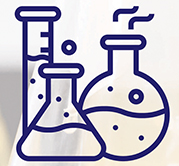The worldwide hand tools industry has garnered $21,854.1 million revenue in 2021, and it is expected to rise at a rate of 4.3% from 2021 to 2030, to generate $31,884.1 million revenue in 2030. Factors such as the rising construction, automotive, shipbuilding, and manufacturing sectors propel the industry growth.
Furthermore, the increasing usage of hand tools in DIY and aerospace sector for various applications, such as hammering, sawing, drilling, and others boost the industry.
Rising DIY and woodwork activities, ascribed to expensive labor costs, and their unavailability are major trends in the industry. It facilitates them to increase investment in quality raw materials with saved labor costs. Moreover, the changing consumer lifestyles, and increasing creative and fun activities, with resource availability, such as DIY guides, video tutorials, and how-to articles encourage people to participate in such activities.
In addition, the rising demand for wood products is the major reason for industry expansion. Presently, people are demanding more wood-based products for offices and homes. The rise in the usage of eco-friendly materials in the construction & building sector has fuelled the worldwide requirement for wood furniture.
Furthermore, shifting consumer preference toward eco-friendly products is ascribed due to climate change and global warming. In addition, countries such as Japan, China, and the U.S. are experiencing surging growth in the wood products demand, ascribed to numerous environmental and economic advantages.
General-purpose tools are widely used hand tools due to their versatility across the world. Moreover, these tools are easy to use, and need no special skills for operating. Hence, this category holds the largest industry share, of 66.6% in 2021.
While, the cutting tools category is projected to experience the fastest growth, of 4.6%, from 2021 to 2030. These tools such as chisel & files, saws, cable & wire, cutting tools, and knives and blades are used in numerous end-use industries, including automotive, electronics, aerospace, and construction sector. Furthermore, the surging usage of these tools in furniture, woodworking, and DIY applications is projected to propel the industry in the coming future.
Hand tools are utilized in almost every industry, the major end users of these products are automotive, aerospace, and construction sectors. Therefore, the expansion of these sectors is projected to fuel industrial hand tools usage. Therefore, the industrial category holds the largest industry share.
Under this, construction holds the largest share, due to population explosion, and surging urbanization, resulting in growing residential and commercial facilities. It thus fuels the requirement for hand tools. Moreover, industrial hand tools are worldwide driven by their maintenance and construction application.
The aerospace category is projected to experience the fastest growth, of 4.6% from 2021 to 2030, in the industrial sector. The expansion of this sector is ascribed to growing air travel demand, technological advancements, increasing disposal income, and a surging number of space exploration projects. That is why, it creates high inspection demand, repair, and maintenance of aircraft structures, which fuels the requirement for industrial hand tools.
The automotive sector is projected to rise massively in the near future, due to the rising usage of industrial hand tools in repairs, modifications, and irreplaceable servicing. In addition, the ease of use, and affordability boost their usage in garage modification, DIY projects, and others.
Therefore, the rising woodwork and DIY activities are projected to boost the demand for hand tools.















